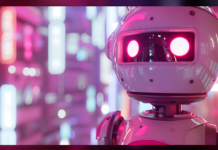I had the privilege of participating as a panelist in the webinar titled “5 Red Teaming Tactics to Ensure GenAI Safety,” organized by ActiveFence. This event brought together trust and safety leaders to discuss the critical role of red teaming in ensuring the safety of Generative AI (GenAI) systems.
Webinar Overview
As GenAI technology evolves rapidly, ensuring its safety becomes increasingly important. The webinar focused on how red teaming, a technique traditionally used in cybersecurity, is now essential for developing generative models. The discussions covered various red teaming approaches suitable for different company sizes and use cases, insights from ActiveFence’s collaboration with leading LLM developers and GenAI startups, and strategies to address and reduce bias in GenAI models.
My Contributions
During the webinar, I shared my experiences in establishing Safety by Design (SbD) programs for GenAI projects, emphasizing how these processes differ from other product developments. Here are some key points from my discussion:
Safety by Design as a Crucial Process:
Safety by Design is essential for developing safe and reliable GenAI products. It ensures that safety considerations are integrated from the very beginning of the development process.
Early Involvement of the Safety by Design Team:
The SbD team should collaborate with product teams from the ideation phase, conducting thorough risk assessments before development begins. This proactive approach helps identify potential safety concerns early on.
Continuous Involvement Until Post-Launch:
Given the novelty and complexity of GenAI technology, predicting all safety concerns can be challenging. Therefore, the SbD team should remain involved throughout the entire development lifecycle, including post-launch evaluations, to address any emerging issues.
Behavioral Science Insights:
As a trained behavioral scientist, I provided insights into human-AI interactions and discussed the unique safety concerns that GenAI presents. I emphasized the urgent need for comprehensive safety policies and the development of effective safeguards.
Conclusion
Participating in the “5 Red Teaming Tactics to Ensure GenAI Safety” webinar was an enriching experience. It was an excellent platform to exchange ideas and strategies with other industry leaders and to highlight the importance of Safety by Design in GenAI projects. As we continue to innovate and develop GenAI technologies, it is crucial to prioritize safety and ethics to build secure, reliable, and trustworthy AI systems.
I look forward to continuing these important discussions and collaborating with others to advance the field of GenAI safety.
What are your thoughts on the role of red teaming in GenAI safety? How can we further enhance the Safety by Design approach to address emerging challenges in AI development?





